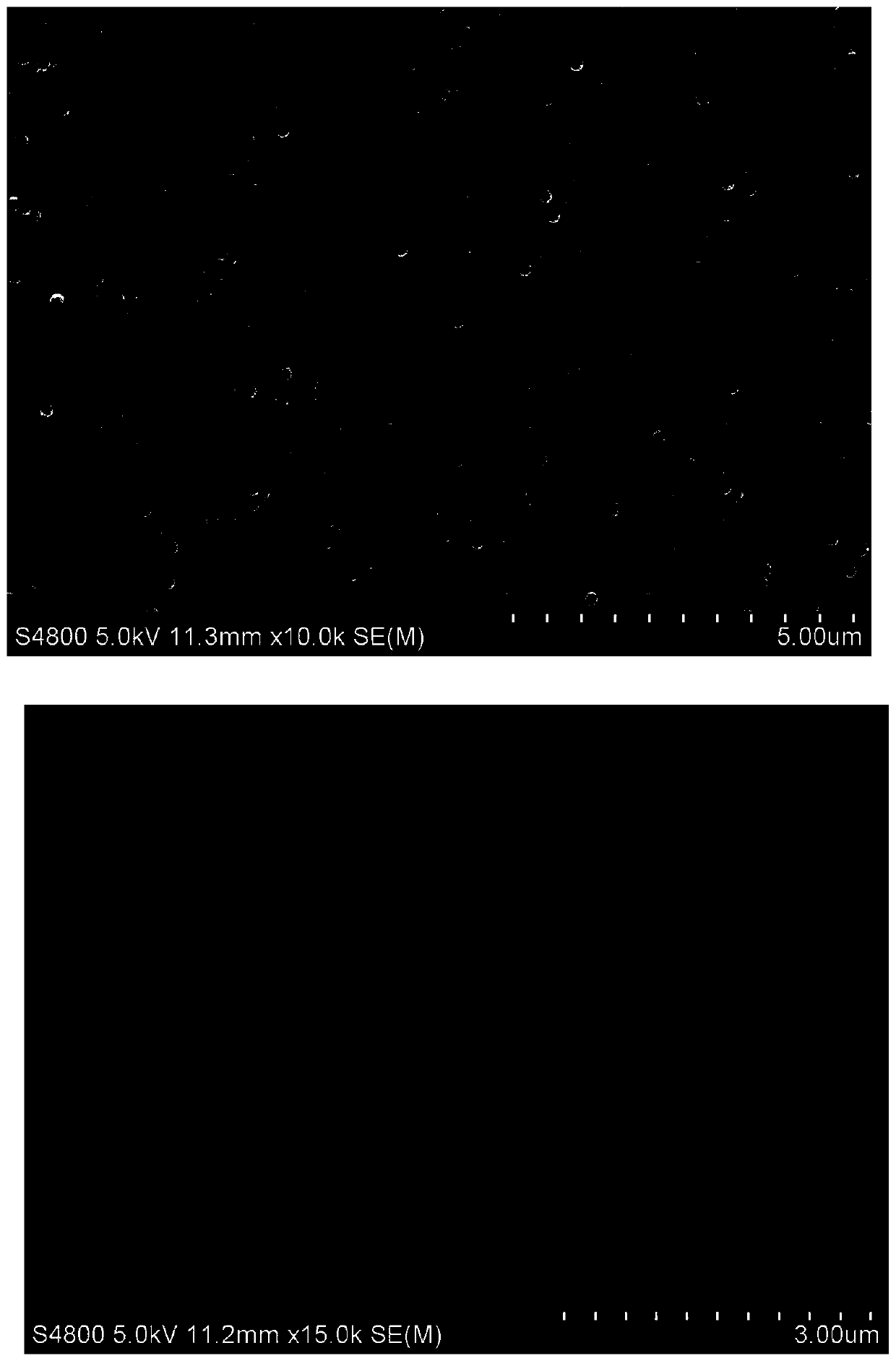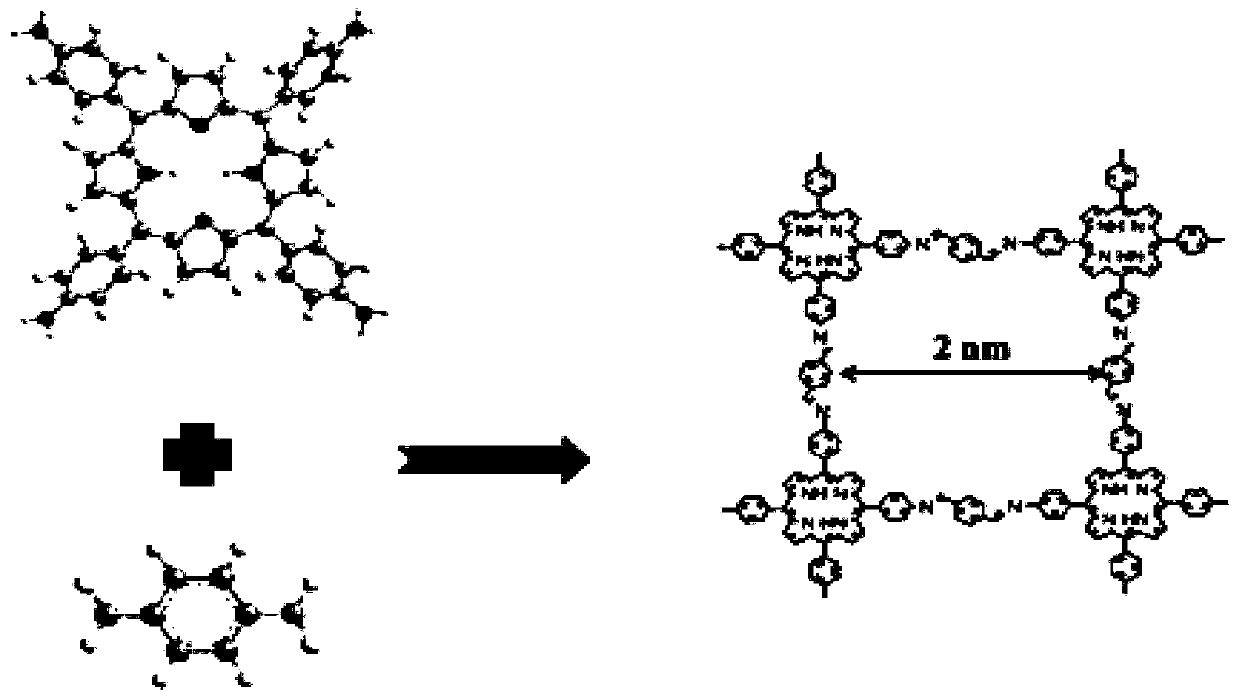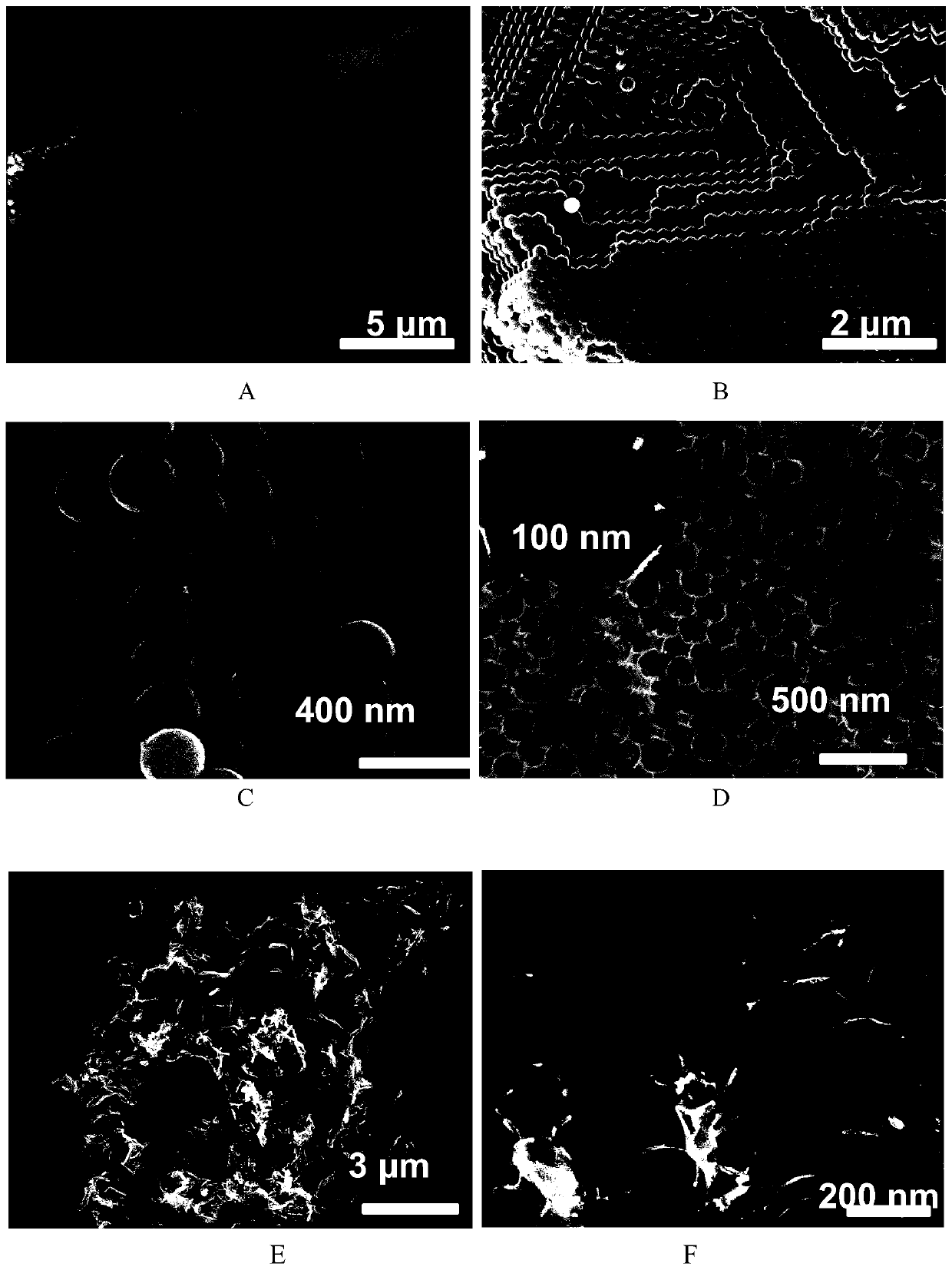MOF-derived carbon-based photonic crystal-porphyrin-containing COFs composite material and its preparation method and application
A technology of photonic crystals and composite materials, applied in the field of materials, can solve the problems of unsatisfactory carbon dioxide adsorption effect, difficulty in exposing adsorption sites, etc., achieve good adsorption effect, inhibit agglomeration, and improve adsorption capacity
- Summary
- Abstract
- Description
- Claims
- Application Information
AI Technical Summary
Problems solved by technology
Method used
Image
Examples
Embodiment 1
[0048] In this example, a MOF-derived carbon-based photonic crystal-porphyrin-containing COFs composite material was prepared. The specific preparation method is as follows:
[0049] (1) Preparation of silica photonic crystal:
[0050] Dissolve tetraethyl orthosilicate (TEOS 25 ml) in ethanol (360 ml) at 30°C, then slowly add ammonium hydroxide (22 ml) and deionized water (20 ml) dropwise, and mix the obtained The solution was stirred at 30 °C for 18 h. Then, monodisperse silica microspheres dispersed in water can be obtained by centrifugation and ultrasonication. The concentration of the silica microspheres dispersed in water is adjusted to 5wt%, and placed in a 10 ml flask, so that the monodisperse silica microspheres are carried out on the bottle wall under the conditions of 65° C. and relative humidity of 65%. Assembled to obtain the silicon dioxide photonic crystal with a diameter of 200 nanometers. Silica photonic crystals with different diameters can be obtained by a...
Embodiment 2
[0059] In this example, a porphyrin-containing COFs material was prepared, and the specific preparation method is as follows:
[0060] In a high temperature pressure tube (26*125 mm), H2TAP (50 mg), terephthalaldehyde (18 mg) were dispersed in o-dichlorobenzene (3 ml), butanol (3 ml) and acetic acid (0.75 milliliter, concentration: 6 mol / liter) in the mixed solution, after ultrasonic 15 minutes of gained reaction mixture, then freeze under the temperature of 77K (liquid nitrogen bath), then by freezing-vacuumize (approximately 50 millitorr inside pressure)-thawing and dissolving cycle to reduce the oxygen content in the system. After complete deoxygenation, heat the reaction mixture to 120°C and continue to react for 48 hours. A dark purple precipitate will form at the bottom of the tube. Filter and separate the precipitate . The separated dark purple solid was transferred to a Soxhlet extractor, and washed by dioxane (24 hours) and acetone (24 hours) under reflux to obtain 6...
Embodiment 3
[0079] The carbon dioxide adsorption properties of the MOF-derived carbon-based photonic crystal prepared in Example 1, the MOF-derived carbon-based photonic crystal-porphyrin-containing COFs composite material, and the porphyrin-containing COFs material prepared in Example 2 were tested.
[0080] The test method of carbon dioxide adsorption performance is as follows: use micromeritics ASAP 2020 to test at room temperature 298K. Before the test, the material to be tested is treated at 120°C for 10 hours to remove the gas and water adsorbed on the surface of the material.
[0081] Test results such as Figure 13 As shown in Table 3, in conjunction with the results of the above-mentioned Table 1 and Table 2, it can be seen that different carbonization annealing temperatures will affect the specific surface area and N content of the MOF-derived carbon-based photonic crystals prepared by the present invention, and as the annealing temperature increases , the N content will decreas...
PUM
 Login to View More
Login to View More Abstract
Description
Claims
Application Information
 Login to View More
Login to View More - R&D
- Intellectual Property
- Life Sciences
- Materials
- Tech Scout
- Unparalleled Data Quality
- Higher Quality Content
- 60% Fewer Hallucinations
Browse by: Latest US Patents, China's latest patents, Technical Efficacy Thesaurus, Application Domain, Technology Topic, Popular Technical Reports.
© 2025 PatSnap. All rights reserved.Legal|Privacy policy|Modern Slavery Act Transparency Statement|Sitemap|About US| Contact US: help@patsnap.com



